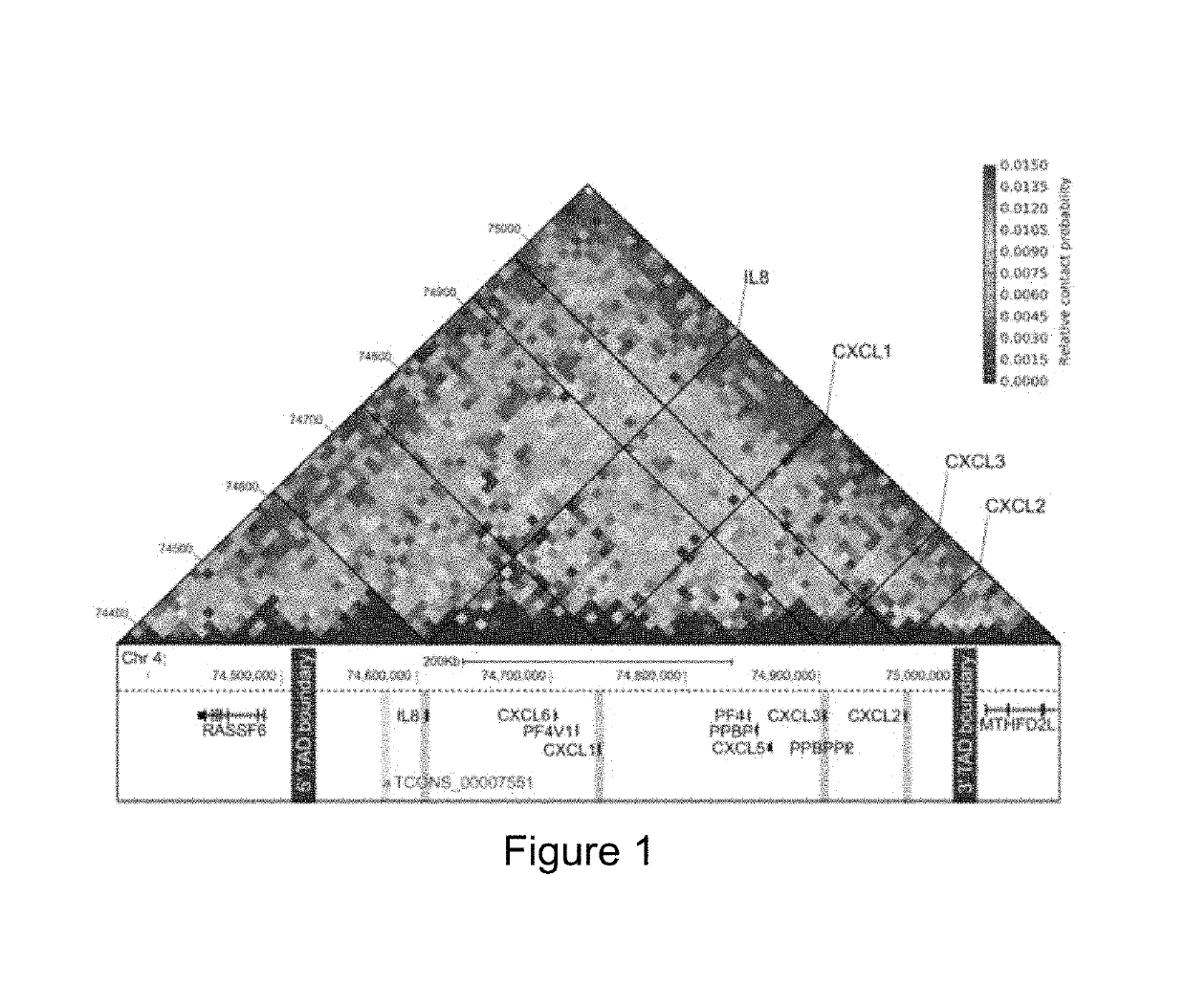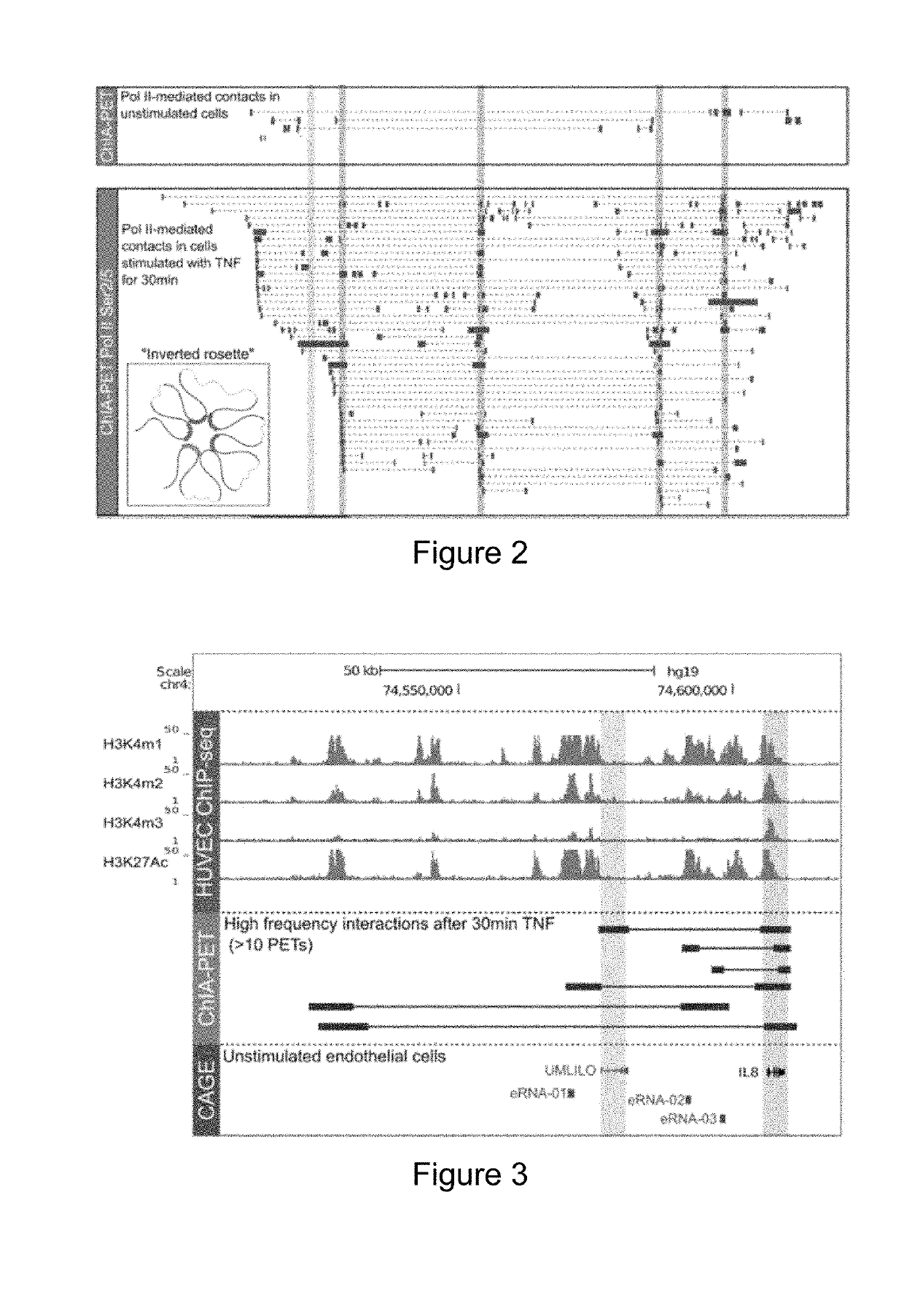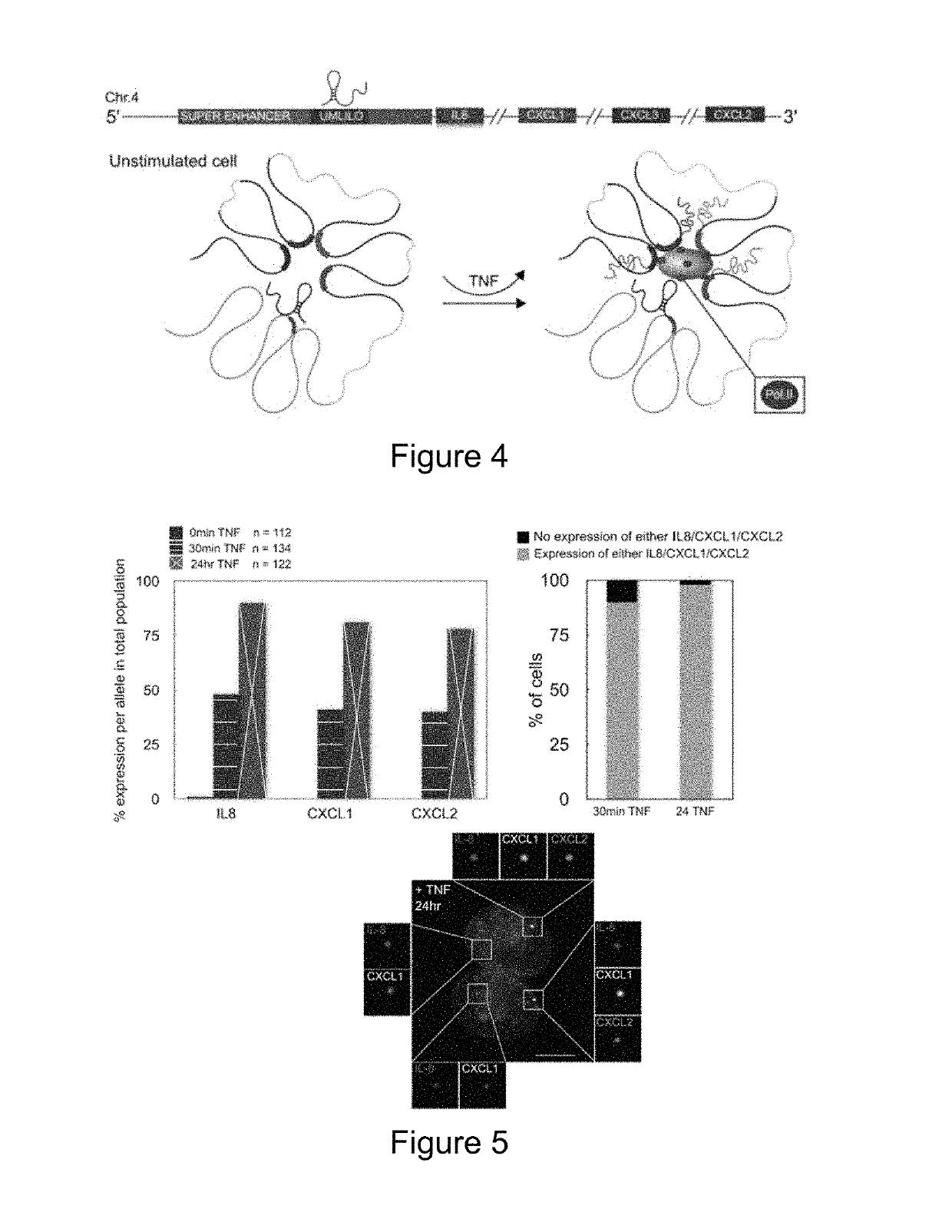Immunomodulation by controlling elr+ proinflammatory chemokine levels with the long non-coding RNA umlilo
a technology of proinflammatory chemokines and immunomodulation, which is applied in the direction of viruses/bacteriophages, drug compositions, immune disorders, etc., can solve the problems of stochastic response in gene expression, tissue degradation, dynamic loop-mediated regulation, etc., and achieve the effect of decreasing the production of elr+ chemokines
- Summary
- Abstract
- Description
- Claims
- Application Information
AI Technical Summary
Benefits of technology
Problems solved by technology
Method used
Image
Examples
example 1
[0100]Cell Culture
[0101]Early passage HUVECs from pooled donors (Lonza) were grown to ˜80% confluence in Endothelial Basal Medium-2 (EGM-2) with supplements (Lonza), serum-starved (18 hr) in EGM-2+0.5% FBS, and treated with TNF (10 ng / ml; Sigma) for up to 24 hr. Prior to transfection cells were grown in antibiotic free EGM-2.
[0102]Hi-C Analysis
[0103]Hi-C sequencing data were preprocessed (iterative alignment and outlier removal) using the pipeline described by Imakaev and colleagues (Imakaev et al. 2012). The heatmap in the chemokine locus show the Hi-C interactions as paired-read counts between pairs of sliding windows of 50 Kbp in length.
[0104]ChIA-PET Analysis
[0105]The two Pol II (Ser2 / Ser5) ChIA-PET libraries for HUVEC were obtained from NCBI (accession numbers: GSE41553) (Papantonis et al. 2012). One library is obtained 0 min after TNF treatment while another one is obtained 30 min after TNF treatment. Each library yielded about 35 millions paired-end reads. Both libraries were...
example 2
[0132]The ELR+ CXC Chemokines Engage in Pre-Formed Chromosomal Contact
[0133]Recent Hi-C and 5C studies show that several classes of innate immune genes are organized into TADs (Jin et al. 2013). Tumor necrosis factor (TNF) has been shown to strongly induce the expression of the ELR+ CXC chemokines (I L8, CXCL1, CXCL2 and CXCL3; hereafter referred to as chemokines) in fibroblasts and endothelial cells (Paulsen et al. 2013; Jin et al. 2013). Therefore, we utilized previously published Hi-C data to examine the higher order chromatin organization of the chemokine TAD in diploid fibroblasts (IMR90), primary endothelial cells (HUVECs) and other cell types. Analysis of Hi-C data across the proinflammatory chemokine locus revealed that the chemokine TAD spans a region of ˜500 Kbp, and is well defined in unstimulated IMR90s, HUVECs and other immune and non-immune cells (FIG. 1). Further, the chemokine TAD in humans may be further divided into two smaller subdomains with the super-enhancer re...
example 3
[0138]UMLILO Transcription Precedes Chemokine Gene Activation
[0139]The regulation of chemokine expression occurs predominantly at the transcriptional level. Historically, chemokine transcription is assayed at a population level, which lacks the resolution to reveal the exact site of active chemokine transcriptional activation. Importantly, this can only be achieved through single cell studies able to achieve single molecule resolution. Thus in order to directly observe the site of transcription at a single cell level, we designed single molecule RNA FISH (smFISH) probes to target the introns of the chemokine genes (Raj et al. 2008). As introns are typically spliced and degraded cotranscriptionally, these probes label the transcriptional start site (TSS). Of the four chemokine genes within the TAD, CXCL3 does not possess an intron and was therefore excluded from our single cell analysis experiments. Using intronic smFISH, we were able to show that the chemokines are only induced in H...
PUM
| Property | Measurement | Unit |
|---|---|---|
| exposure time | aaaaa | aaaaa |
| exposure time | aaaaa | aaaaa |
| piezo step-size | aaaaa | aaaaa |
Abstract
Description
Claims
Application Information
 Login to View More
Login to View More - R&D
- Intellectual Property
- Life Sciences
- Materials
- Tech Scout
- Unparalleled Data Quality
- Higher Quality Content
- 60% Fewer Hallucinations
Browse by: Latest US Patents, China's latest patents, Technical Efficacy Thesaurus, Application Domain, Technology Topic, Popular Technical Reports.
© 2025 PatSnap. All rights reserved.Legal|Privacy policy|Modern Slavery Act Transparency Statement|Sitemap|About US| Contact US: help@patsnap.com



